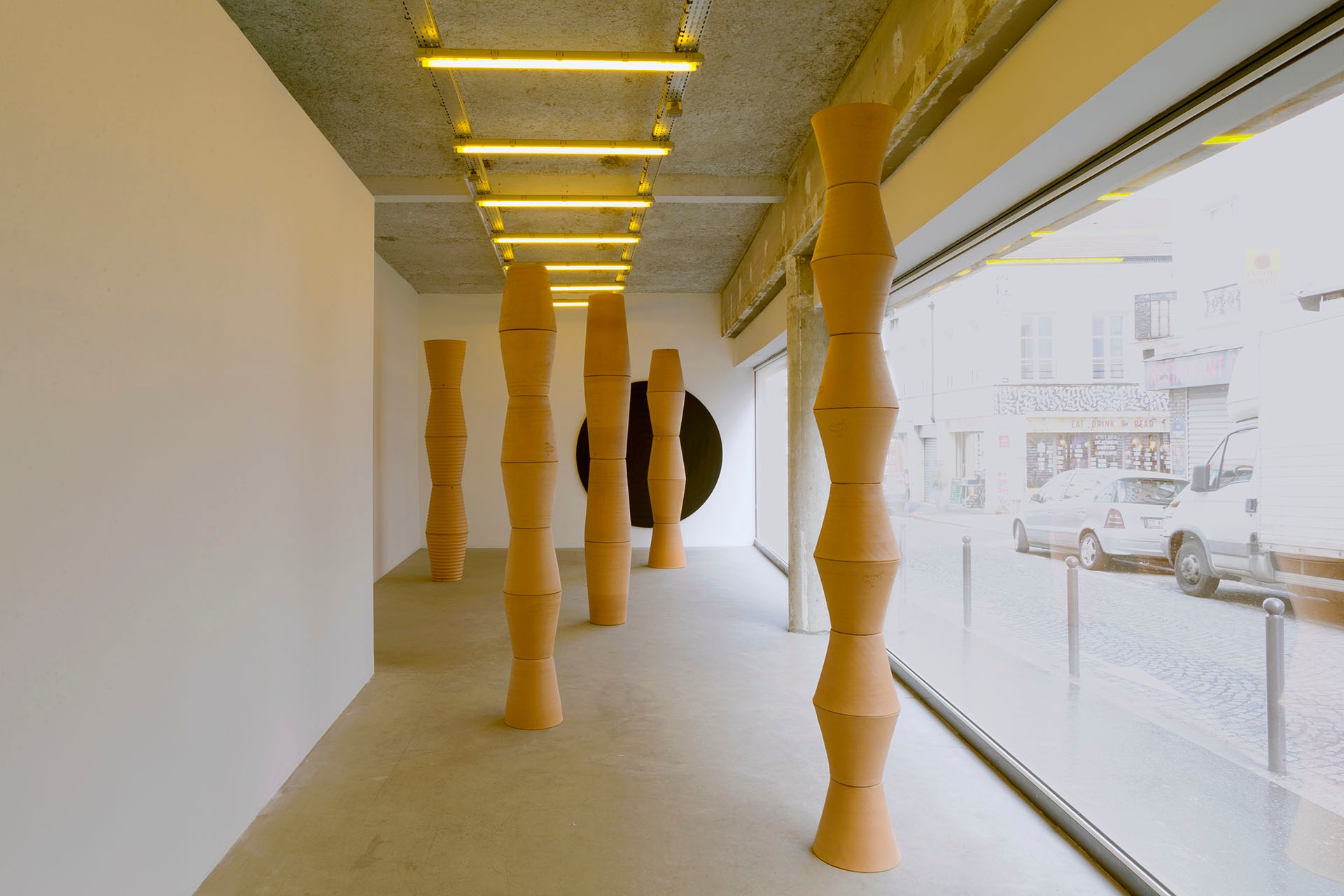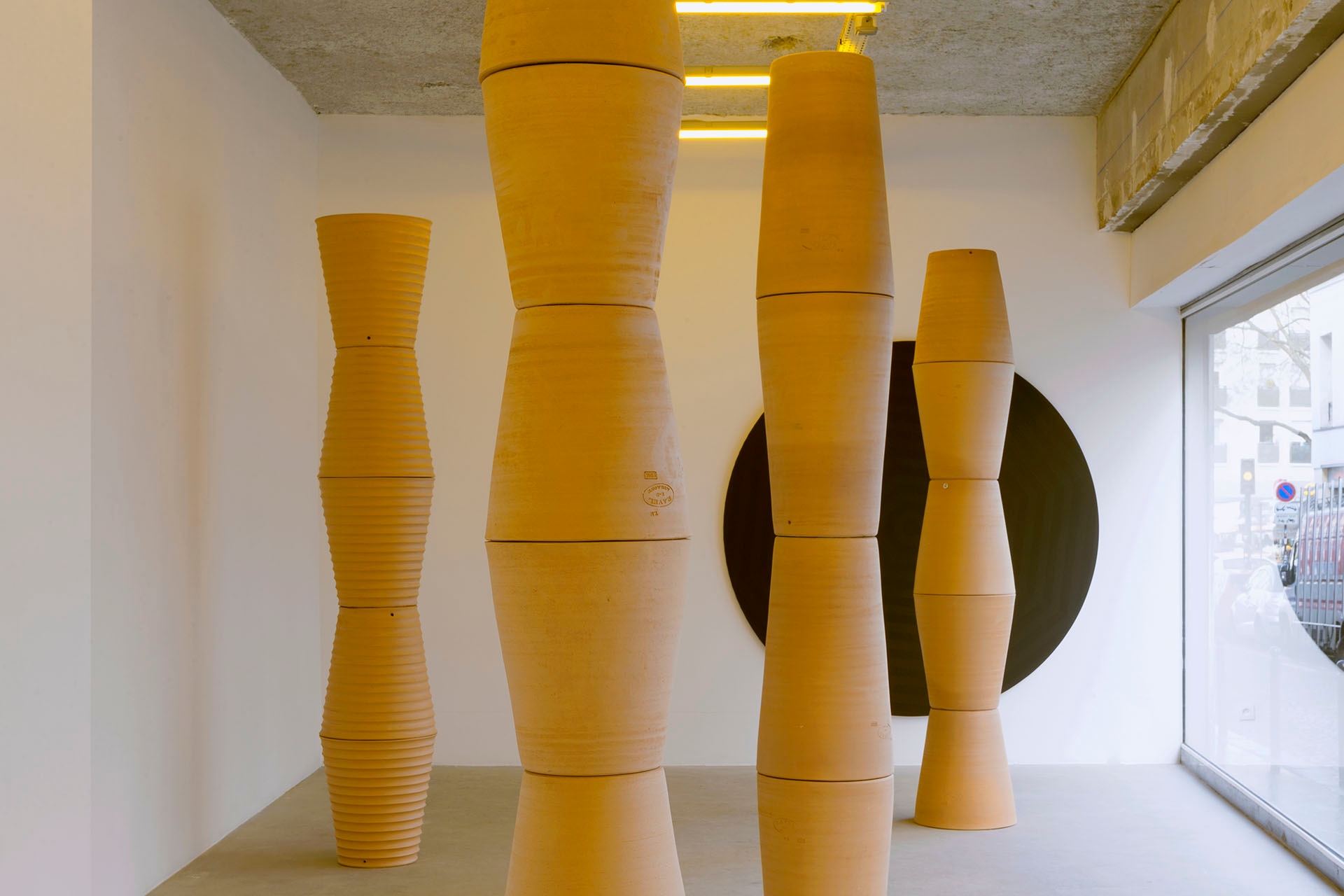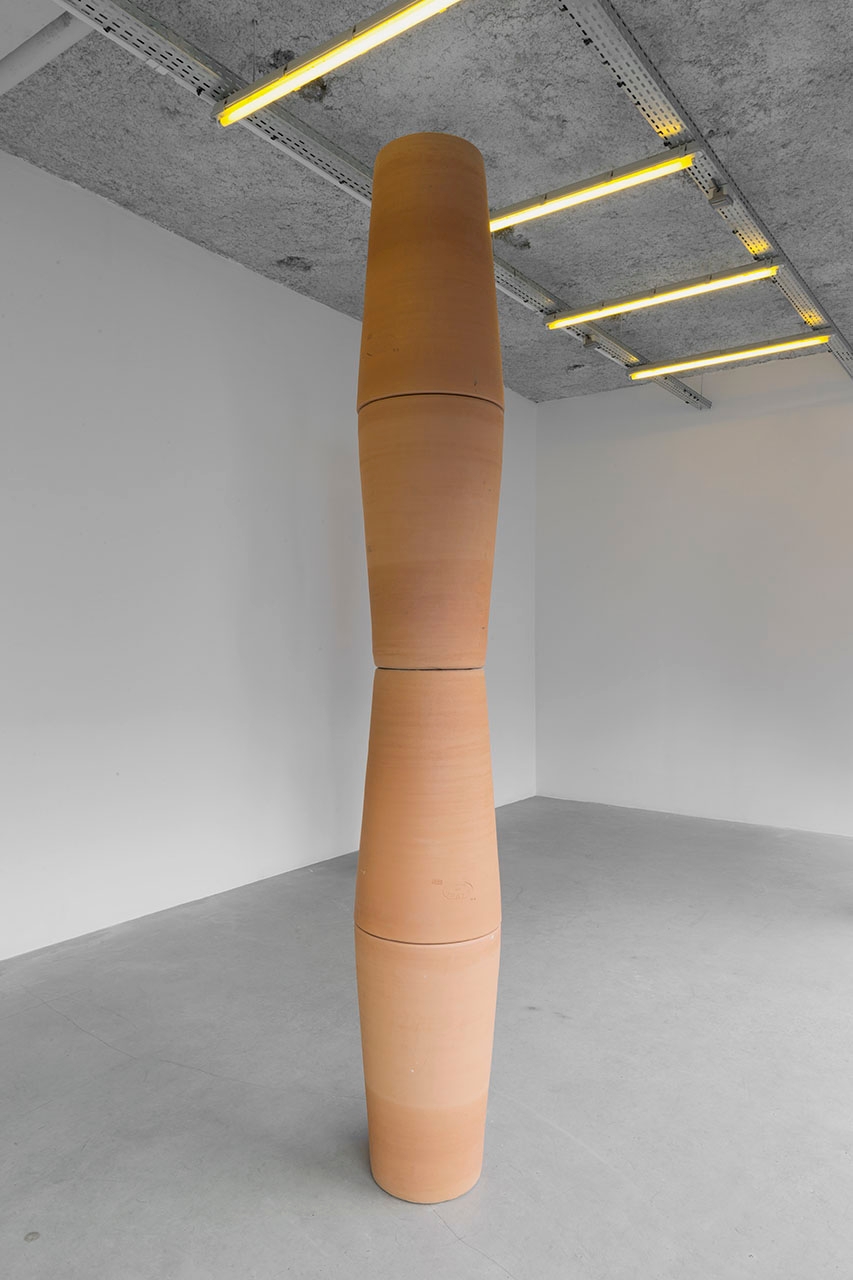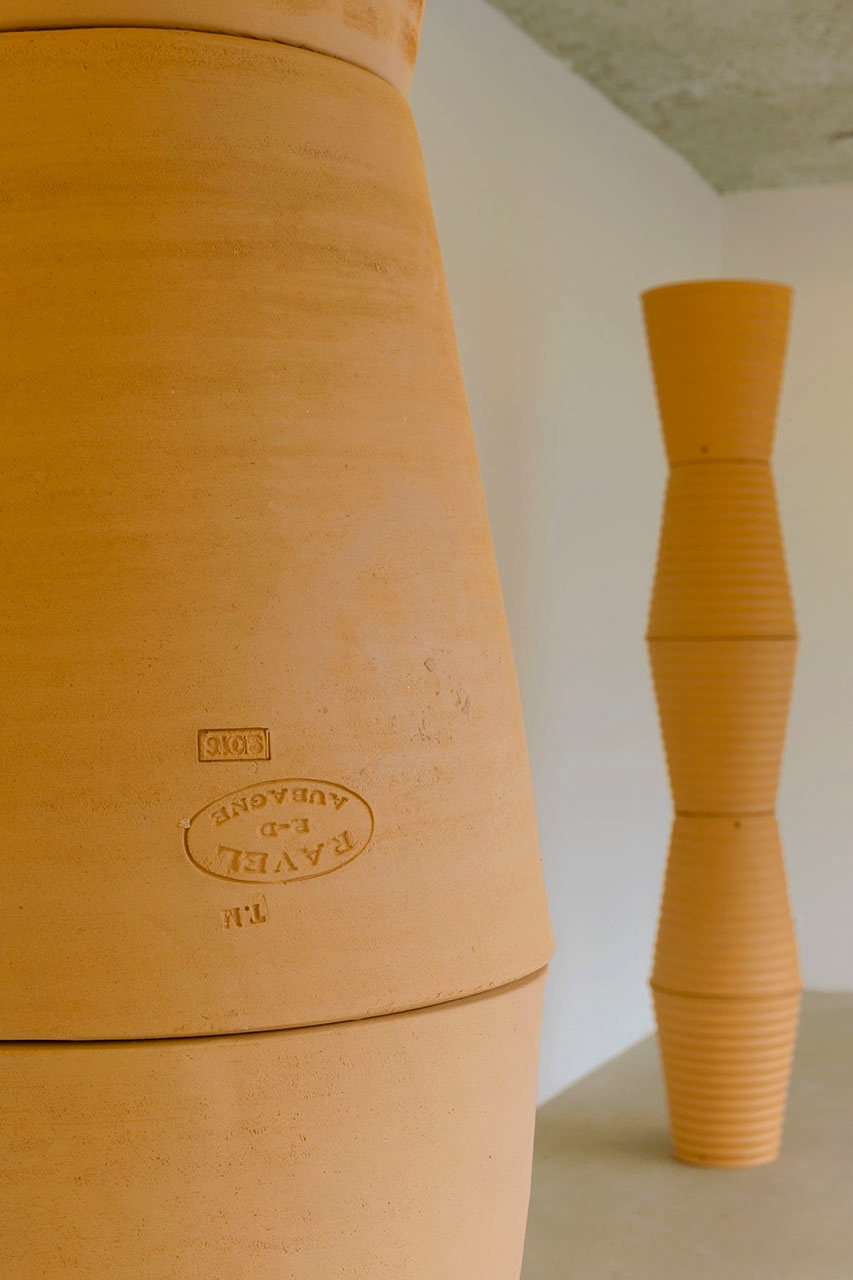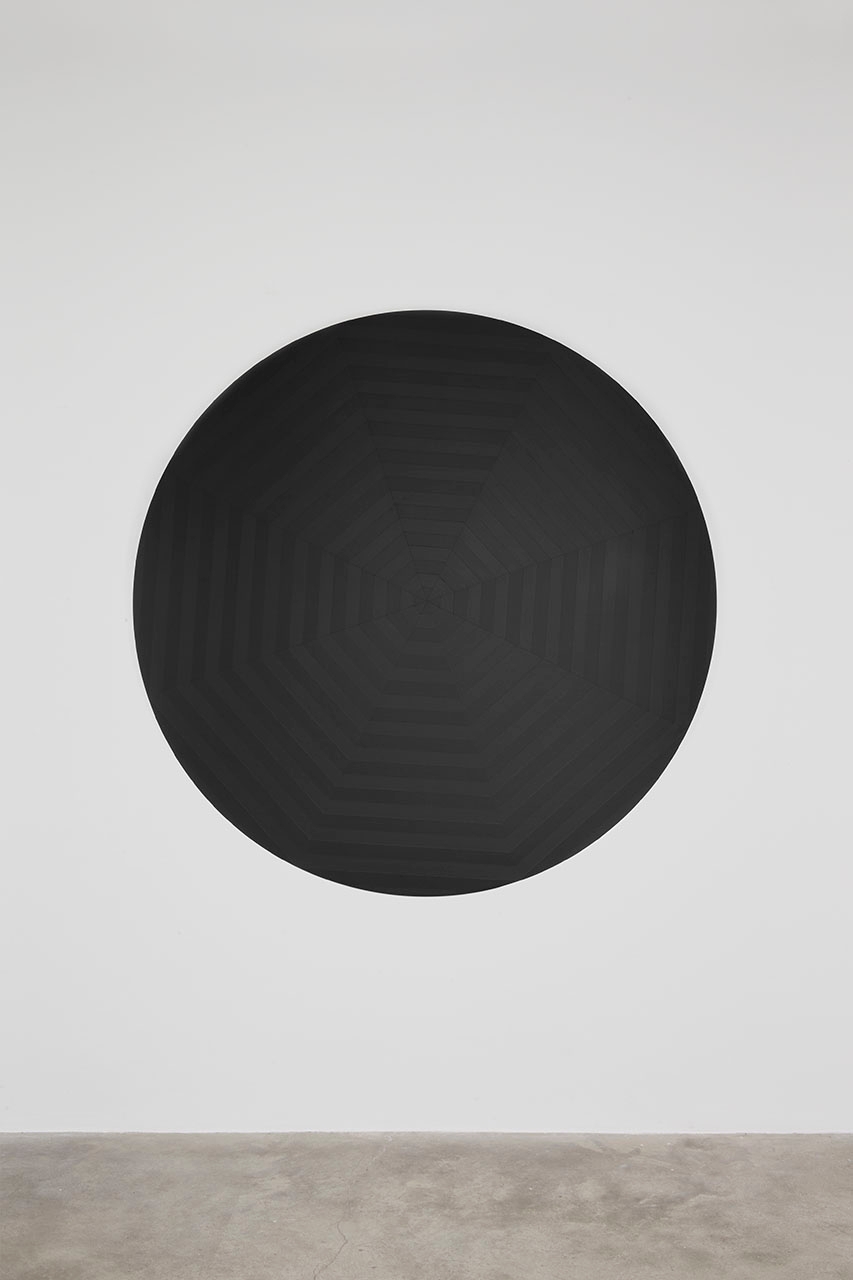Olivier Millagou’s third solo exhibition at Galerie Sultana lends its title from a 1965 beach movie “One Way Wahine” - a thrill-seeking comedy with a backdrop of the luxuriant, tropical beauty of Hawaii. Millagou takes advantage of the idyllic vision of the archipelago conveyed by the 1965 film to create a contemporary landscape in contrast with this carefree spirit, proposing instead a paradise lost.
Palm tree trunks, represented here by raw terracotta pots, have neither life nor fronds and are stripped of their magnificence. They symbolise both the state of the Hawaiian landscape today, which no longer resembles the idyllic vision of 1965, as well as also representing the state of the contemporary Provencal landscape: from hurricanes on the one hand to red palm weevils on the other. In fact, the headless palm trees are part of today’s landscape as much in Provence as in Hawaii, and a great majority of palm trees on the Cote d’Azur have had to be destroyed after being attacked by destructive red palm weevils. The Pacific and Provencal coasts are subjects that have inspired Olivier Millagou from his earliest works.
“One Way Wahine” takes common similarities from these two cultures (printed fabrics and terracotta) and plays with Provencal know-how used to create works making reference to Hawaii. The pots were in fact produced by Poterie Ravel in Aubagne, a company that still produce hand-made garden planters from local clay. As for the black sun motif, this was produced by Les Olivades in Saint-Etienne du Grès, an iconic century-old business in the South of France renowned for its prints.
The sky blue fabric, decorated with a black sun is also part of this unenthusiastic vision of paradise. The black sun surrounded by a simple golden halo becomes an endlessly repeated motif. The painting represents a black, open umbrella seen from above. This object supposed to be representing a carefree state, of quiet and happiness, loses its colours and becomes, here, worrying. But, the exhibition is bathed in a yellow light, as warm as the power of the sun, that when added to the sky blue of the printed fabric “colour an optimistic note. One Way Wahine” is a unique path towards a paradise that is ultimately not as far away as you brings by think.
Any resemblance to 20th century artists is neither fortuitous nor involuntary.
♡
Troisième exposition personnelle d’Olivier Millagou à la galerie Sultana, «One Way Wahine» reprend le titre d’un beach movie de 1965, une comédie avec frissons ayant pour toile de fond Hawaii, luxuriante beauté tropicale.
Olivier Millagou se sert de la vision idyllique de l’ archipel véhiculée par le film en 1965, avec cet esprit insouciant et qui propose plutôt un paradis perdu. Afin de créer un paysage contemporain contrastant, les troncs des palmiers, représentés ici par des pots en terre cuite bruts, n’ont ni vie, ni palme et sont dénudés de leur magnificence. Ils symbolisent à la fois un état du paysage d’Hawaii d’aujourd’hui, qui ne ressemble plus à la vision idyllique de 1965, mais également un état du paysage provençal contemporain : les ouragans d’un côté et les charançons de l’autre. En effet aujourd’hui, aussi bien en Provence qu’à Hawaii, les palmiers sans tête font partie du paysage. En effet la grande majorité des palmiers de la côté d’Azur ont dû être détruits suite à l’attaque de coléoptères ravageurs.
Les côtes du Pacifique et la Provence sont des sujets dont Olivier Millagou s’inspire depuis ses débuts dans ses œuvres. «One Way Wahine» reprends des similitudes communes à ces deux cultures (tissus imprimés et terre cuite) et met en jeu des savoir-faire provençaux utilisés afin de réaliser des œuvres faisant référence à Hawaii. Les pots ont en effet été produits par la poterie Ravel à Aubage, qui fabrique encore à la main des pots de jardins en argile avec de la terre locale. Quant au motif du soleil noir, il a été fabriqué par Les Olivades à Saint-Etienne du Grès, une entreprise emblématique, centenaire, du sud de la France pour la qualité de ses imprimés.
La toile bleue ciel, ornée d’un soleil noir fait également partie de cette vision peu enthousiaste du paradis. Le soleil noir entouré d’un simple halo doré devient un motif qui se répète à l’infini. La peinture représente un parasol noir déplié et vu de dessus. Cet objet sensé représenter un état d’insouciance, de quiétude et de bonheur perd ses couleurs et devient, là, inquiétant.
Mais, l’exposition est baignée d’une lumière jaune, aussi chaude que la puissance du soleil, qui additionnée au bleu du ciel de l’imprimé amène par la «couleur une note d’optimisme. One Way Wahine» est un chemin unique vers un paradis qui n’est finalement pas si loin qu'on ne le croit.
Toute ressemblance avec des artistes du XXe siècle n’est ni fortuite, ni involontaire.

